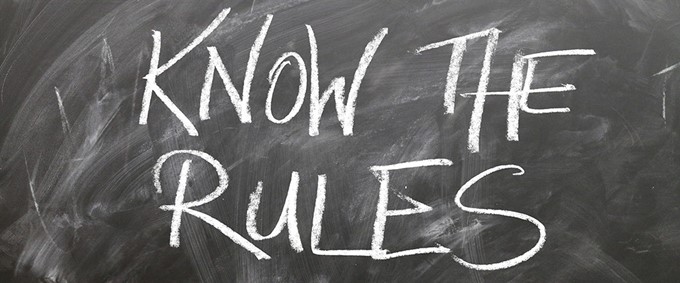
WHAT’S DRIVING YOUR BUSINESS?
It’s absolutely necessary to ensure that the forces driving your business are the ‘right’ forces. So it’s necessary to step back and objectively analyse what’s at play. Some forces should NOT be allowed to drive a business and some MUST be in place to do so.
Below is a list of both, in order of importance.
Forces that should NOT be driving your business:
- Busy’ness is the worst driving force of a business. It results in the wrong questions: How do we get through the work? How can we manage our time better? Should we put on extra staff? Coping with being busy is not taking the business into the future. Strangely, it can even become comfortable for people because they feel that if they are busy then the business is ok … that’s often not the case. Busy’ness stifles creativity and is the result of what has been done in the past, and not all busy’ness leads to desired outcomes. Being busy can be just being busy.
- Aversion to taking risk s is the second worst driving force. The most common way that this can come about is if people are not aware it’s happening. They justify not attempting new ideas and new ways on grounds they can rationalise with logic, claiming that to be appropriately careful. Every business must take calculated risks and has to avoid being risk averse.
- Cost cutting is the third worst. No business has ever shrunk itself to magnificence. If costs are genuinely too high then that’s a result of poor decisions in the past or marketplace changes that were not anticipated. Either way, cost cutting should not drive a business. It’s a reactionary correction not a leading cause of future success.
- Pre occupation with today’s success is fourth. Credit where it’s due for sure but not at the expense of preventing advances into the future. Businesses are here today and gone tomorrow, now more than ever, with markets crumbling underneath them or from new competitors squashing them. A business that is successful today must be driven by creating and implementing changes to remain successful, not think that what’s worked to date will also work tomorrow.
- Fifth, being driven by the wrong people … people who are traditional in their thinking, bogged down in habits, can get their own way through strong personalities or have seniority, should not be driving your business. The right people to drive your business are the innovators.
- Pre occupation with the economy is sixth. This causes three problems: reactionary thinking, excuses for poor performance that can be perceived as valid and thinking inside the square. The fact is that economic change will always occur (and is difficult to predict), and framing business direction and strategy in anticipation of that is not fundamentally sound, as distinct from engaging approaches that will stand up to economic fluctuation.
- Reaction to competitors is seventh. By definition, that’s reactionary and is likely to be just playing catch up. At the very least, a business should be leading competitors not catching them But, even better is to have no competitors. Watching competitors is not a productive driving force.
- The eighth worse is tradition and habits . “We’ve always done it like that and it’s worked in the past”. That means nothing in today’s business world … Uber, Airbnb, Alibaba, Netflix, Facebook, etc. etc. etc. It’s one thing to respect tradition but it’s another to let it drive the future.
- Ninth is ‘the next thing you see’ . Businesses that allow that as a driving force are not innovative nor creative. They are actually reactionary to what someone else has already thought of or done.
- What customers say is tenth. For years, the business world has been drilled with ‘the customer is always right’, ‘make every customer feel special’, etc. That’s not always sound. Clearly, they are not always right and just as clearly it can be unprofitable to make every customer feel special. Some customers should actually be rejected by a business. Customer feedback is important but not all of what customers say should drive a business.
- Eleventh is pre occupation with today’s problems . Today’s problems are caused by today’s circumstances not what is possible tomorrow. So, whilst businesses do have to deal with today’s problems they should be focused on doing that in terms of the future rather than just for today. Focusing on today’s problems often turns into classic ‘Asking the wrong question’.
- Twelfth is ‘Not much’ . That is, not much is driving your business. This is the sad case for some businesses. They are just doing the work, which can be a recipe for irrelevance … corner milk bars, bookstores, dvd hirers.
Forces that MUST be driving your business:
- The most important driver for any business is innovation, new ideas and creativity . The examples of successful (new) businesses around the world are just too numerous and significant to ignore. Entrepreneurs must be driving your business, not operational thinkers. The can do’ers, the innovators, the everything is possible types. This is more necessary than ever. Every business now faces the choice of being disrupted or of becoming a disruptor. That choice simply must be to be a disruptor.
- Technology is the second most important driver. As Bill Gates said “Information technology and business are now inextricably linked. I don’t think anyone can talk meaningfully about one without the other”. Technology must be a driver of a business, not just an enabler of business. We are told by the techno’s that we are only scratching the surface of what technology can already do for business let alone what it will turn up in future.
- What you think the customer would buy if you supplied it is the third most important driver. That’s the Apple approach … to supply consumers with something they didn’t even know they wanted and then make them feel they can’t live without it. And, as Henry Ford said ‘If I’d asked people what they wanted they would have said a faster horse’.
- Growth of internal people is fourth. Richard Branson says grow your people first and your business will follow … not the other way around. Trying to grow a business by having that as the first thought will never draw on the power of your own people … people become the means to an end. It’s saying ‘How can we use our people to improve the business?’ rather than ‘How can we improve our people, to improve our people?’
- Fifth, is to use the demographics of the (changing) markets you are in or could be in, to frame what you provide, how you provide it and how you market it . Culture, ethnicity, age, sex, political persuasion, etc. all impact the size and characteristics of markets, communication preferences. It’s simply too narrow to (accidentally) engage a market strategy that only reaches some groups, rather than many, most or all.
- Sixth is global thinking . Every product can have a global market if enough thought is put into it. It’s easier now than ever to get that reach.
- Digital marketing is seventh. Cheap, easy, broad in coverage and technology based. Any wonder it’s become so significant. It has to be a major driver in the marketing move forward. The point of this high performance action is to KNOW the forces that are driving your business, then make judgements as to whether they are the right ones and then to adjust to something better if possible.
Previous Newsletter Articles
Business Tips
HR Information
Contact Us
1300 022 270
enquiries@myabbs.com.au






